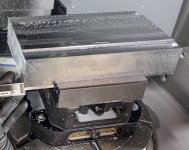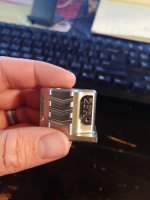Hi,
Simple question, really. I have a new tool on the way for cutting 5th axis dovetails. I was wondering if this tool (I don't have it in my possession yet) would also be suitable for taking a light face cut to flatten my part. This would save a tool change and speed up my process. Looking to take a max of about .020, just to flatten the top.
303 Stainless
2013 Haas VF4SS
Flood Coolant
Part is 1 x 1.5 x 1.75
For 303 the website shows 300-600 SFM and .003 to .006 IPT. WOC says .120 and DOC says application dependent. Should I be able to take this in 2 passes per side of dovetail coming in from the side?
Thanks for your help,
Alex


Simple question, really. I have a new tool on the way for cutting 5th axis dovetails. I was wondering if this tool (I don't have it in my possession yet) would also be suitable for taking a light face cut to flatten my part. This would save a tool change and speed up my process. Looking to take a max of about .020, just to flatten the top.
303 Stainless
2013 Haas VF4SS
Flood Coolant
Part is 1 x 1.5 x 1.75
For 303 the website shows 300-600 SFM and .003 to .006 IPT. WOC says .120 and DOC says application dependent. Should I be able to take this in 2 passes per side of dovetail coming in from the side?
Thanks for your help,
Alex





